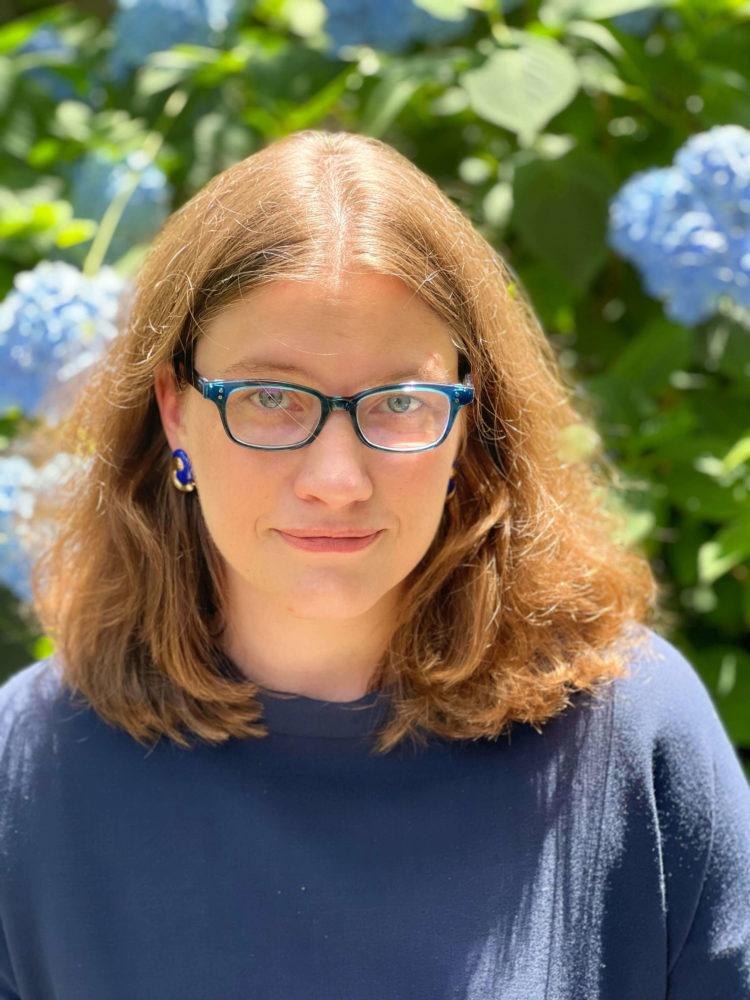
On the late summer day that I interview Sarah Kapnick, NOAA’s new chief scientist, over a Zoom call, there is a cacophony of chainsawing outside my window. My neighbor, I explain as tree branches crash to the ground, is finally (and speedily) clearing a long-vacant lot, presumably to build a big home – and, couldn’t this have happened on a different day? Kapnick is nonchalant. “We call that ‘land use and land use change‘,” she says.
Appointed by President Joe Biden in July, Kapnick will use some of that unflappability as she takes on a monumental task: Help prepare a woefully underprepared nation for the ravages of extreme heat and other hazards brought on by climate change. A Princeton-educated scientist with a Ph.D. in atmospheric and oceanic sciences, Kapnick brings serious credentials to the job, including an expertise in climate models, a recent stint as a Wall Street sustainability strategist and even a previous position at NOAA. That’s not a coincidence. Whoever serves as NOAA’s chief scientist – and Kapnick is just the third woman to do so – must have impeccable credentials so that her word can be trusted.
I asked Kapnick about the new job, the climate emergency and whether there’s any hope for the future.
The conversation has been lightly edited for length and clarity.
What should leaders in business, government and elsewhere know about climate?
Climate change is already fundamentally changing the world and changing society. As with all prudent decision-making, we need to review how it can affect our daily activities and also how the extremes can cause disruptions in the future. We just came out with a new website [with the CDC, the National Institutes of Health and other partners] called heat.gov. You can find the current forecast of heat extremes. But then there’s also advice like: How should the elderly plan for the heat? How does heat stress show up in children, in pets and in livestock? How do you plan for heat issues in your business, such as providing more cooling breaks and water breaks?
Extreme heat is one of the growing climate perils that we’re starting to see and it’s becoming more frequent and more severe.
What exactly are the biggest perils, just so we can all have nightmares?
My husband always calls me the downer of the cocktail party, because people start asking these questions. Heat is the one that has cost the most lives in the United States. But then you have drought, which is also very costly. Hurricanes, either when they hit or even as they dissipate, because they can cause extreme flooding. You also have ice storms and severe weather, which would be thunderstorms or others.
I’m not trying to be facetious but is there any hope for the future?
I’m the downer until I get asked this question. We have the information. We know what the future holds. There’s a lot of uncertainty, but we know the direction of what’s going to happen. This knowledge is power. It’s a matter of making sure that knowledge gets into the right hands and people are using it, which I see as NOAA’s role in making sure that we put that information, data and tools out there. Then it’s up to the decision-makers to start using it, acting upon it.
There’s so much that can be done. I see it now compared to 20 years ago, when I was starting in this. The difference is that people are actually acting on it. Everyone’s talking about it – business leaders, nonprofit leaders, investors, local to federal governments.
Yet there are some who still dispute the science, who fear regulations or government interference. How do you deal with that?
It goes back to the scientific integrity part. We’re giving the facts of what the future holds, and people have the ability to make their decisions based on that information. I would say that no matter where people live, they are recognizing that things are changing compared to what they remember in the past.
How did you carve out a career in climate?
I have always been really interested in climate – and climate risk. My undergraduate degree was in theoretical mathematics with a certificate in finance and research on geophysical fluid dynamics. I first thought that meant, “Okay, I should go work with a bank, and I should cover the insurance industry.” And so I did that. I worked at Goldman Sachs, I covered financial institutions, I worked in catastrophe bonds.
Why exactly would working for a bank be the logical career path?
This was 20 years ago – people weren’t really talking about climate change at the level they are now. The way that “climate” existed in jobs besides science was in the reinsurance industry or in structuring catastrophe bonds, which are bonds that act like reinsurance for insurers. If you have an event like a hurricane or windstorm or floods, then there’s a payout.
You went back to science to get your Ph.D., and spent 10 years at NOAA’s Geophysical Fluid Dynamics Laboratory in Princeton.
Yes. The first climate models were there because of the computing – they required the largest computers. I developed models for understanding seasonal decadal prediction – how climate will look … a few months out, many seasons out, up to many decades. I was also still doing research on the financial implications of climate change.
Eventually, I started getting recruited back to banks. I was really concerned about how science was or was not being used in business. I ended up at JPMorgan [in 2021] because they were very serious about needing to know more [about climate] and because it’s one of the few places that has a lot of women senior leaders.
What brought you back to NOAA this summer, after just a year at JPMorgan?
I was asked to come back as a presidential appointee because of my technical expertise, but also my understanding of financial risks related to climate. I felt a duty to serve. For us to move forward on a number of things, to build resiliency and adaptation around the world, for there to be action, there needs to be an understanding of how these things all fit together.
What else drives you?
I have small kids, so I’m going to do everything I can because of them, and because climate changes are here and we need to be acting on it now. ◼



![Katie Eder was one the founding members of youth-led climate organization Future Coalition in 2018. [Credit: Katie Eder]](https://thestoryexchange.org/app/uploads/2021/11/katie-eder-climate-careers-150x150.jpg)
